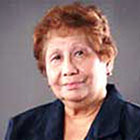IN the 80s, the then-Ministry of Education, Culture and Sports guidelines for opening degree programs for the professions prescribed that 40 percent of the academics teaching in the programs become active practitioners of their profession. The 60 percent are fulltime with the academe who usually are assigned to conduct general education/core/liberal arts, including physical education and sports classes. Present CHED guidelines reiterate general requirements for opening professional degree programs that academics teaching in profession-related specialization courses be duly registered and are holders of the appropriate professional license, have earned aligned graduate/postgraduate degrees and have had professional practice. CMOs spell out additional qualifications requirement for the academic force specific to a profession.
Today’s technology generates more intensive global and regional interaction among areas in human life, giving rise to new competency demands for various professions. Actual practitioners, more than those who have ceased to be active, will naturally have a deeper understanding of trends in their respective turfs. They are expected to have better judgment on what new competencies a profession would need, are more certain of what change is desirable to introduce, which could, as it were, add flavor to the change given that they have a firm anchor on trends since they are in medias res.
Continue reading with one of these options:
Ad-free access
P 80 per month
(billed annually at P 960)
- Unlimited ad-free access to website articles
- Limited offer: Subscribe today and get digital edition access for free (accessible with up to 3 devices)


